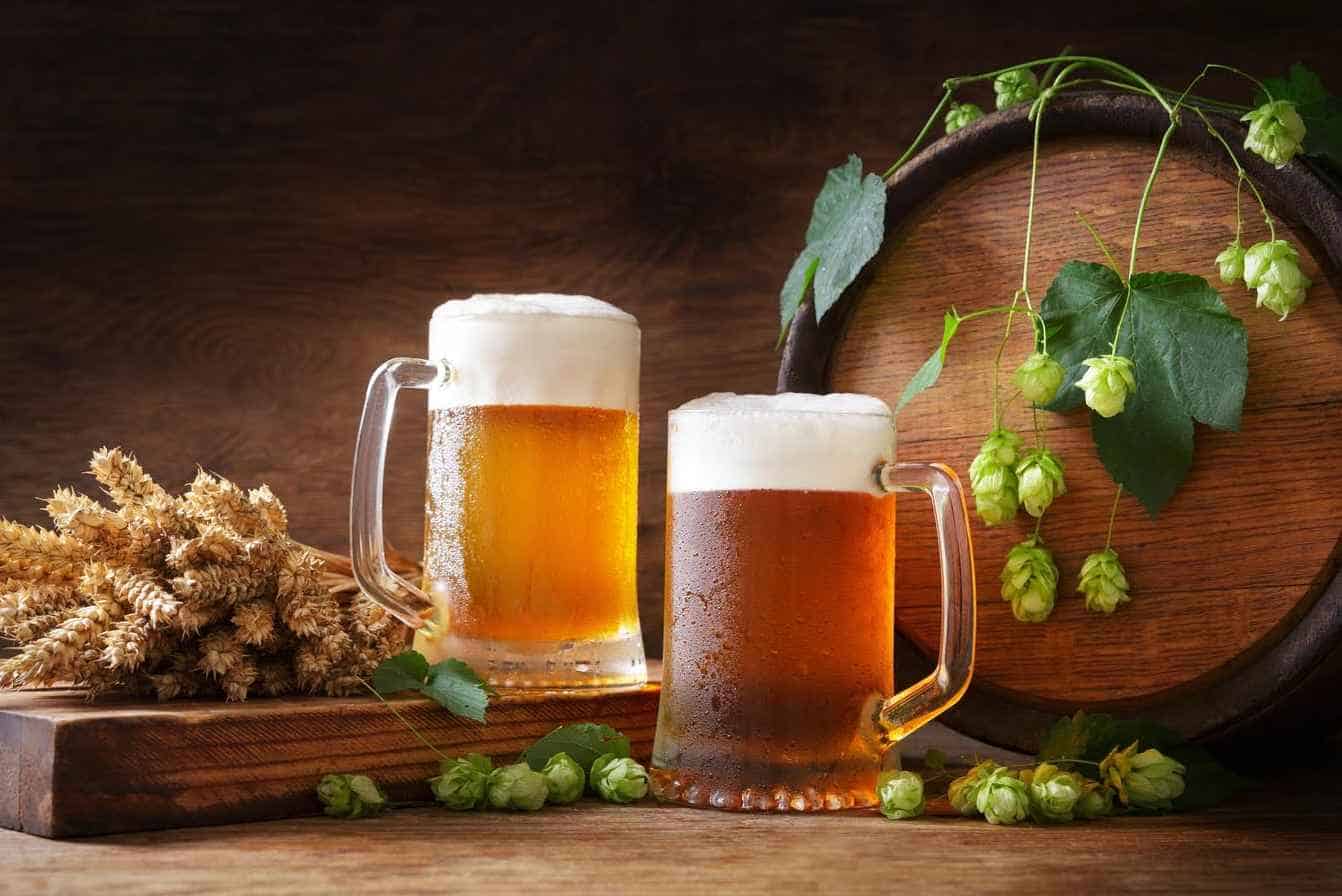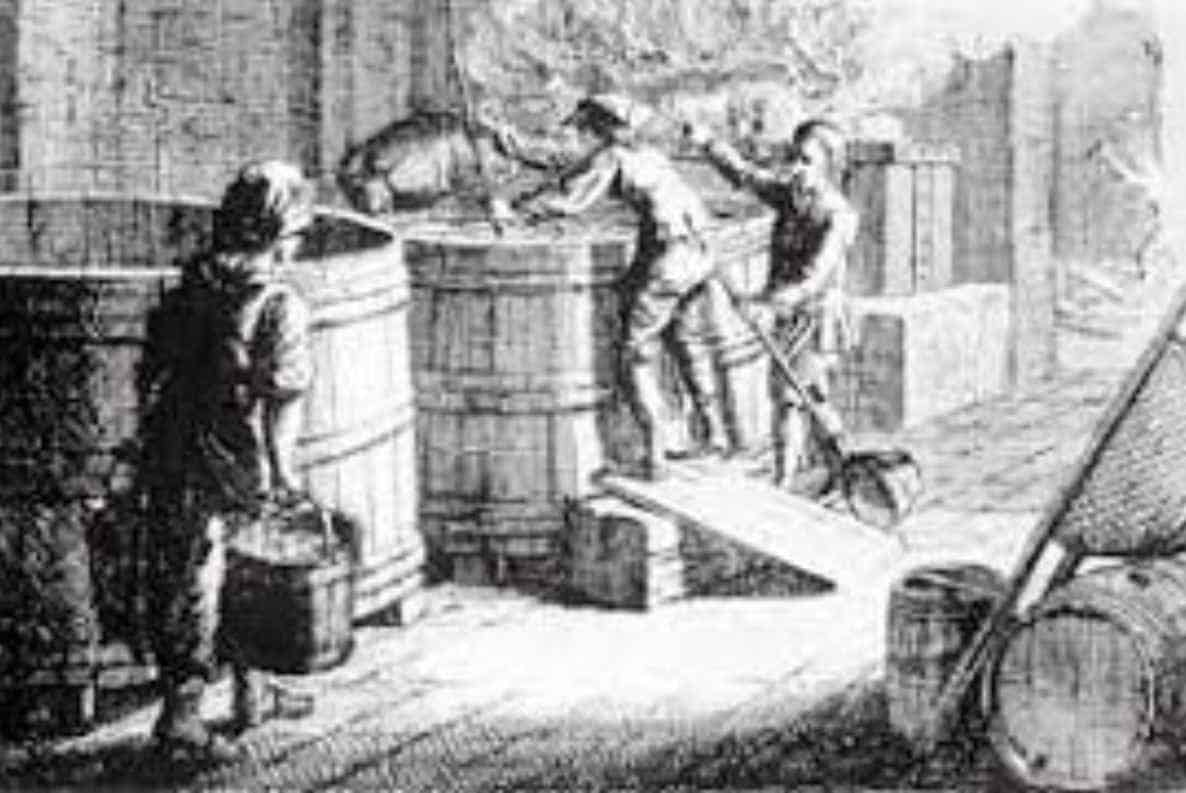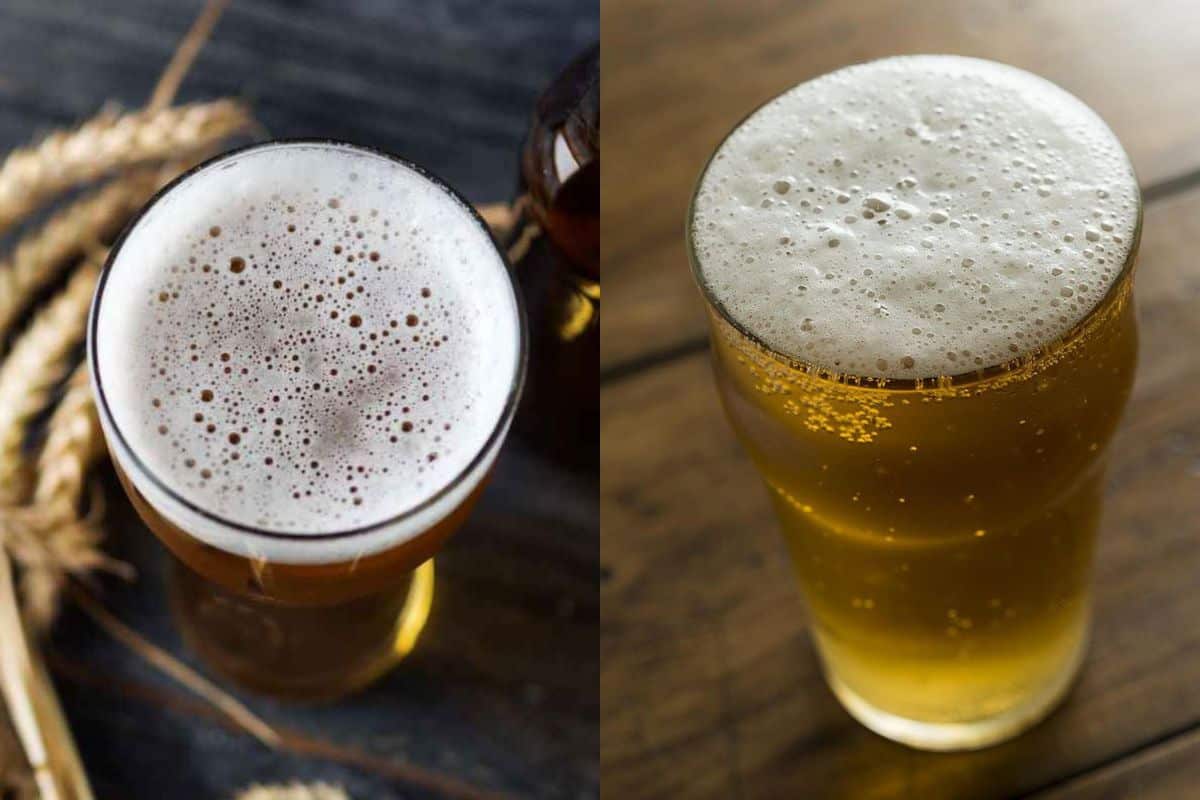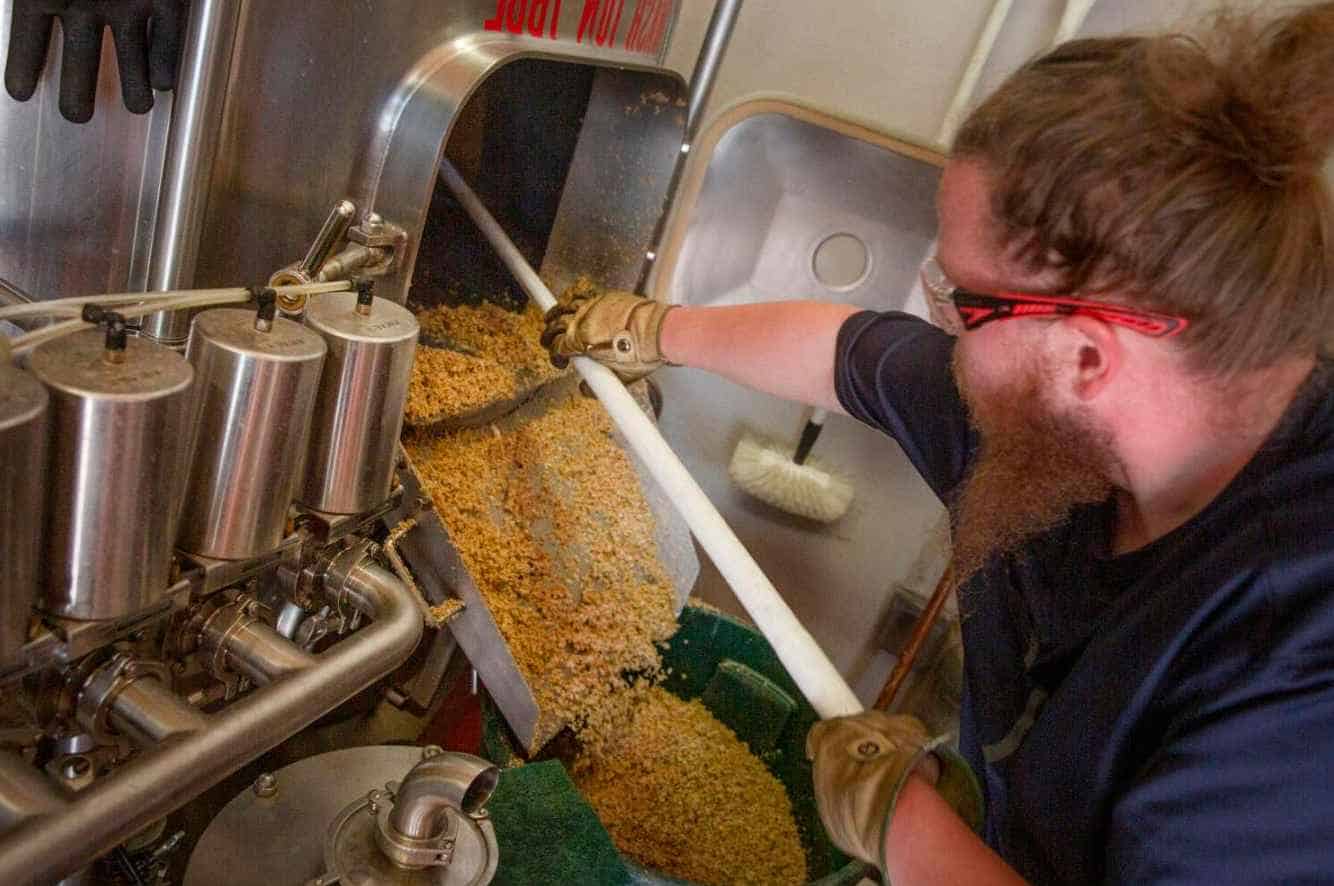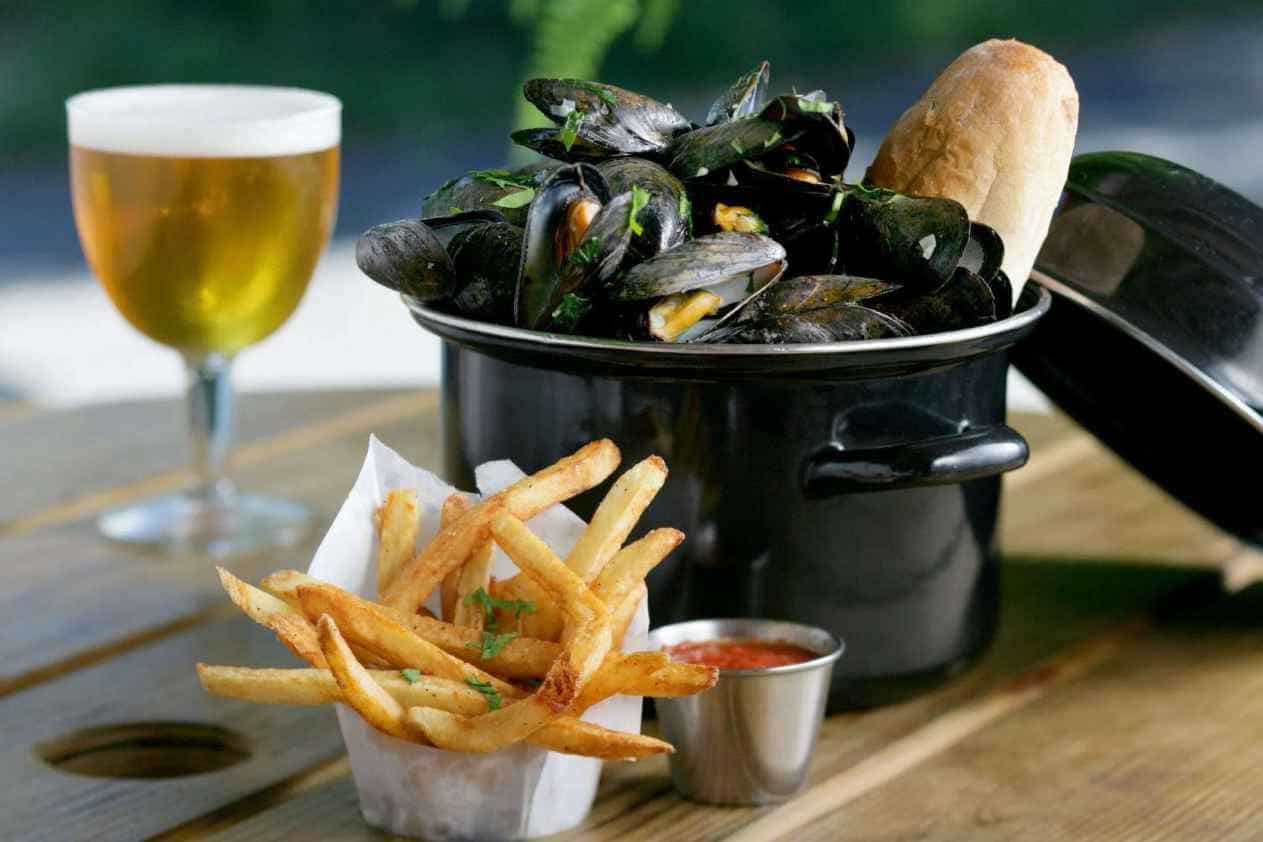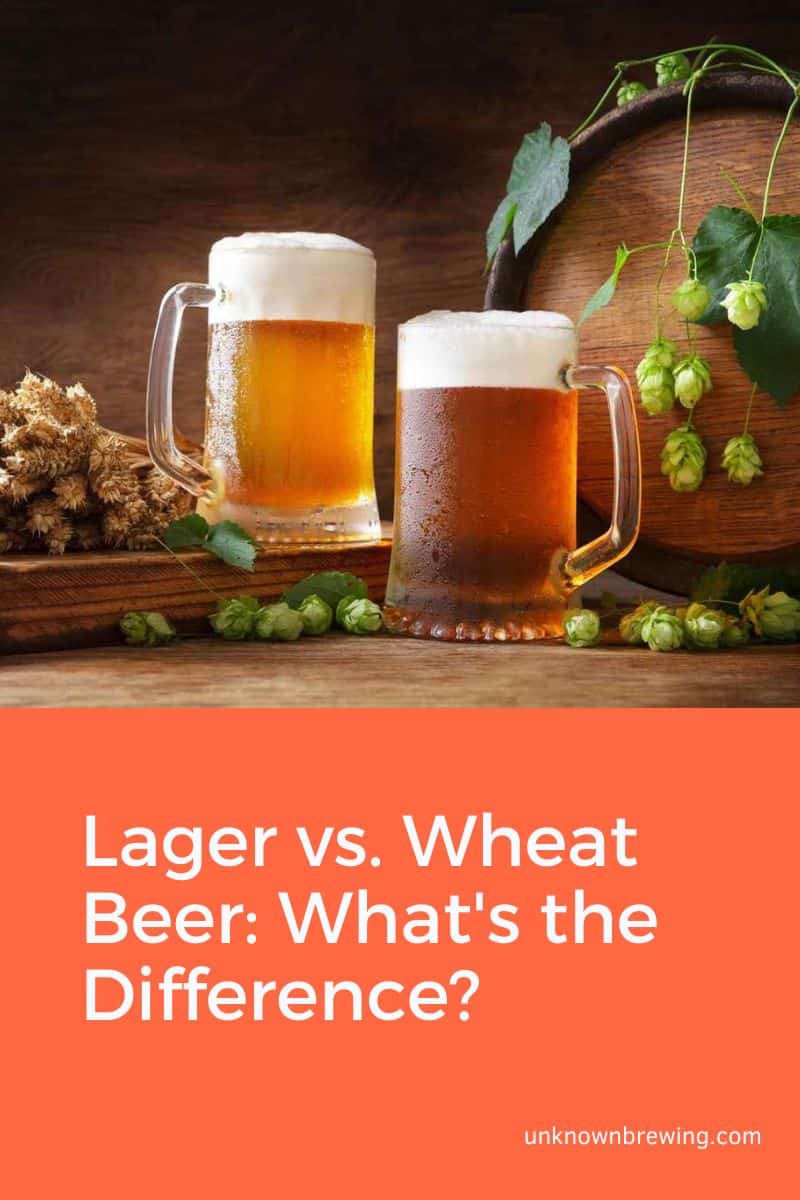Everybody loves lagers. You know, lagers, that sweet, golden nectar that trickles down the beer taps at your favorite craft brewery. But not everyone is familiar with wheat beer, or we just don’t talk enough about it.
Well, we need to change that. But we’re doing it differently; by comparing wheat beers to lagers. Both beer families have similar qualities and they look alike. However, how do you tell these beers apart?
Strap in as we pit these popular beers against each other. We will compare their flavor profiles, brewing processes, and food pairings. We’re going the whole nine with these two beers; we’re leaving no stein
Join us for the bout that nobody asked for as we compare lagers against wheat beers. But first, let’s introduce our contenders.
Lagers: Background
The lager is one of the world’s most beloved styles of beer, but how did this delicious drink come into existence? Well, therein lies a tale full of twists, turns, and hidden meanings.
Some say lagers were born out of pure necessity, created during a time when throats were dry, and resources were scarce.
So brewers had to make do with whatever ingredients they could find. Others believe that the origins of the lager are steeped in magic and mythology, crafted by ancient alchemists who sought to create the perfect elixir.
But here’s what beer history recalls. The lager was conceived in 1400s Bavaria. Actually, the word “Lager” is German for storage. You see, in the old days, monks would curve their cellars into cold caves.
These villainous lairs would serve as storage lockers and fermentation chambers. They would brew lagers in these caves in the winter to reduce the risk of spoilage. And this, kiddos, is why we refer to cold fermentation as “Lagering.”
Wheat Beer: Background
Wheat Beer is a refreshing yet mysterious type of beverage known for its golden color, subtle sweetness, and smooth finish. But where did this beer originate from?
The history of wheat beer stretches back to 3400 BC in Mesopotamia (modern-day Iraq). Archaeologists found evidence of wheat beer brewing from the era. Apart from barley raw materials, they einkorn and spelt (these are the forefathers of modern-day wheat).
But for modern-day wheat beer, we have to travel back to 12th or 13th-century Bohemia (that would be the Czech Republic today). The Bavarians grew jealous of their neighbors and stole the brewing technique. And just like that, wheat beer spilled over to the Bavarian forest.
Fast forward a few hundred years, and wheat beers are now celebrated across the globe for their versatility. Whether you’re sipping a hefeweizen at a beach party, enjoying a witbier on a hot summer day, or cozying up with a Dunkelweiss after work, there’s a wheat beer out there for everyone.
Lager vs. Wheat Beer: Appearance
On the SRM charts, lagers and wheat beers look similar, falling between 2-8 SRM. But when you place two glasses of both beers side-by-side, that’s when you start noticing some differences.
Lager colors range from straw yellow to amber. They tend to be crystal clear, and you can see your buddies through the beer glass. Depending on the style, lagers form heads that range from thin to thick.
Wheat beers tend to be richer in color, as rich as the gold that colors them. And they range from pale yellow to deep amber. They have thicker crowns with impressive retention. Wheat beers tend to be hazier than lagers.
Enough yapping from me; below are some visuals:
| Lagers | Wheat Beer | |
| Color Range | Straw Yellow to Amber | Pale Yellow to Deep Amber |
| Clarity | Clear | Hazy |
| Beer Head | White
Thin to thick Fair retention |
White
Thick Impressive retention |
Lager vs Wheat Beer: Flavor Profile
Comparing lager and wheat beer flavor profiles is like comparing apples to oranges. Both beer families have distinct flavor profiles, and both are yummy.
The lager is a thirsty tongue’s best friend. It has a crisp and refreshing taste profile. It goes down easy, washing the throat and hitting the proverbial spot. Lagers are brewed primarily from Barley malt, giving them a light malty profile with a little sweetness. Overall, lagers thrive by balancing malt sweetness and hop bitterness.
Wheat beer, on the other hand, is more flavorful, usually fruity and spicy. As the name suggests, wheat beers are brewed with wheat (at least 50% of the grain bill). Wheat adds body but doesn’t offer much in terms of flavor. To compensate for the bland taste, brewers spice things up with fruity or spicy hops.
The resulting creation has a heavier mouthfeel than lagers. Overall, wheat beers are also more diverse in terms of flavor. Some of the tasting notes your tongue can expect include clove, banana, and bubblegum.
Lager vs. Wheat Beer: Brewing Process
The processes for making lagers and wheat beers are similar except for two main aspects:
- The Grain Bill
- The Process of Fermentation
- Let’s investigate further
The Ingredients Used
The main difference between lager brewing and wheat beer brewing lies in the grain bill. For their base, lagers mainly use barley malts. And if I were to be specific, I’d say Pilsner Malts at 80% of the grain bill.
For a beer to qualify as a wheat beer, 50% of its grain bill must contain wheat. In contrast, lagers use barley malts as their base.
The Fermentation Process
Let’s dig further into the fermentation rabbit hole. First of all, the beers use different yeast strains in their fermentation processes. In lager brewing, Saccharomyces pastorianus is the commander in yeast. It is in charge of turning your sweet wort into a golden lager. But this yeast has strict conditions; it can only work 45-55°F.
Wheat Beers need a different kind of commander, Saccharomyces cerevisiae. This yeast, too, has its condition; it works under warmer temperatures (64-75°F).
Lager vs. Wheat Beer: Food Pairings
When it comes to food pairings, I don’t have to tell you how important it is to match your flavors. But how do you match lagers and wheat beer with food?
Lager Food Pairings
Lagers have a crisp and refreshing profile. On top of that, they have a light body. A beer with such characteristics can be a good companion for a number of dishes, including:
- Spicy Foods: Lagers are an excellent palate cleanser. They can put out the flames in your mouth as you prepare for another bite. Spicy grubs that pair well with lagers include buffalo wings and lemon pepper chicken.
- Crunchy and Dry Foods: A cold lager can cut through the dryness of crunchy foods. Its refreshing nature quenches your thirst as you prepare for another bite. If you’re planning to devour potato chips, french fries, burgers, or hot dogs, don’t forget to order a cold lager.
- Salads: Lagers complement salads; since both foods are crispy with delicate flavors.
Wheat Beer Food Pairings
Wheat beers are also refreshing and super drinkable beers. While lagers may be more subtle in terms of flavor, wheat beers have pronounced fruity or spicy flavors. Below are some of the foods that combine well with wheat beers:
- Spicy Foods: Wheat beer is also a good palate cleanser. It cuts through the heat of spicy foods, giving your mouth the relief it craves. Spicy companions for wheat beers include spicy noodles, Thai food, and buffalo wings.
- Sea Foods: Claws, fins, or tentacles; wheat beer is a good companion for certain see foods. Wheat beers combine well with lobsters, mussels, spiced shrimp, and tuna. Wheat beer’s refreshing character cuts through the briny nature of these dishes, quenching your thirst while cleansing your palate. Check out this article to learn how to pair beer with seafood.
- Fruity Desserts: What do they say about birds of a feather? Wheat beers and fruity desserts both have fruity flavors, and they complement each other quite well. Whether you’re having fruity pies or cheesecakes, pour yourself a glass of wheat beer.
Lager vs. Wheat Beer: Popular Examples
The lager is the world’s most beloved beer style. It dominates the top-selling beer brands in America. Nine out of the ten are lagers. Would you guess which nine? The top nine, of course.
Below is a list of lagers and wheat beers you’re likely to run into at your local liquor store:
| Lagers | Wheat Beers |
|
|
Conclusion
Lagers and wheat beers are almost like twins; it’s hard to pick them apart. I mean, they look similar, with identical colors. And they both have light bodies and refreshing taste profiles. But let me tell you, lagers and wheat beers are two distinct beer styles.
Don’t believe me? Below are the key differences between the beer styles:
| Lager vs Wheat Beer | ||
| Beer Color | Straw Yellow to Amber | Pale yellow to Deep Amber |
| Base Malt | Pilsner Malts | Wheat |
| Yeast Variety | Saccharomyces pastorianus | Saccharomyces cerevisiae |
| Beer Clarity | Clear | Hazy |
| Alcohol Content
(% ABV) |
4.1-5.3% ABV | 3.5-5.6% ABV |
| Aroma | Malty | Fruity
Spicy |
| Flavor | Malty
Biscuit Caramel |
Fruity
Spicy |
| Mouthfeel | Light Body
Crispy, Refreshing |
Medium Body
Silky, Refreshing |
| Serving Temperature | 32-40°F | 40-50°F |
| Glassware |
|
|
| Food Pairings |
|
|
While we have outlined several differences between lagers and wheat beers, there’s still room for discovery. How about a bit of homework? Try both beers and discover differences of your own.

As a homebrewer, Michael would get frustrated about the lack of brewing information on the internet. After hundreds of gallons of spoilt batches, Micheal had enough. And he founded Unknown Brewing as a resource for homebrewers.
